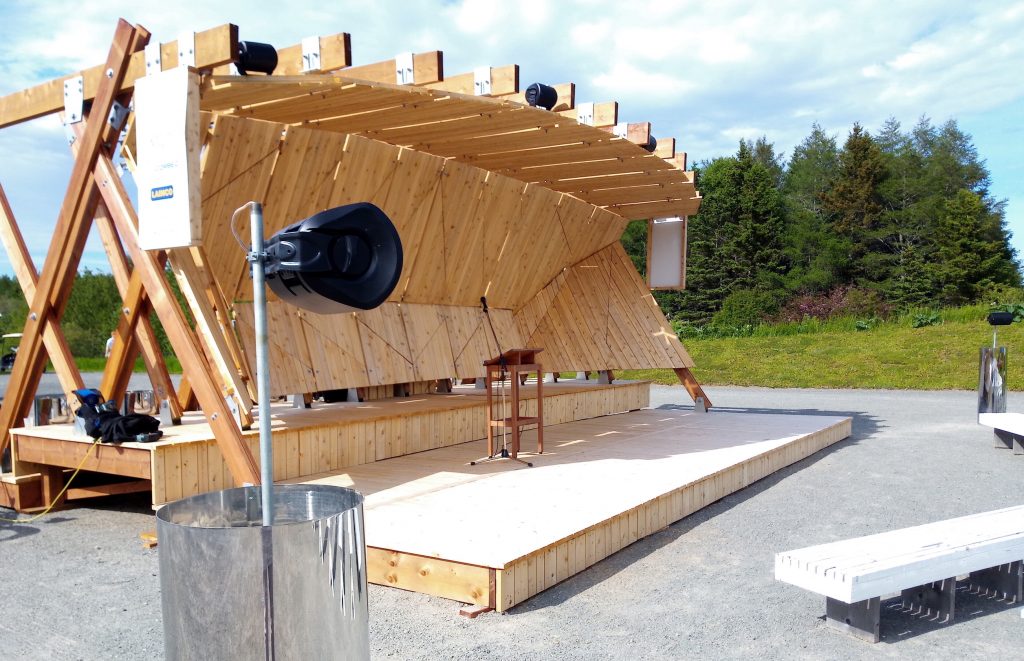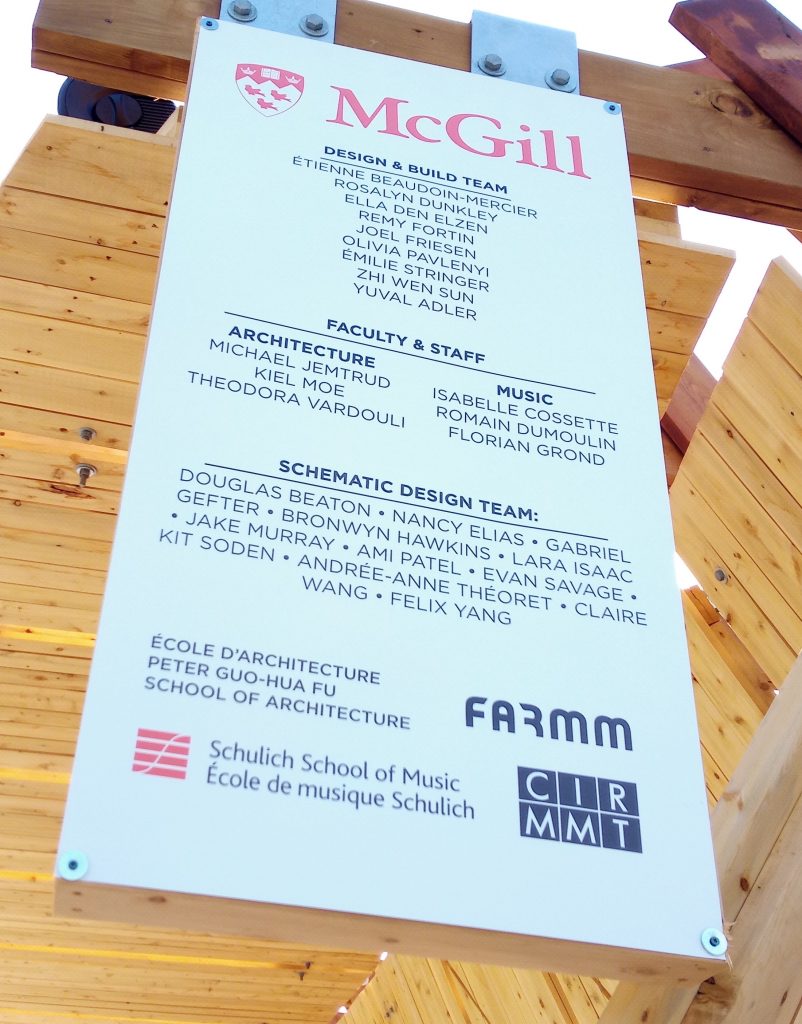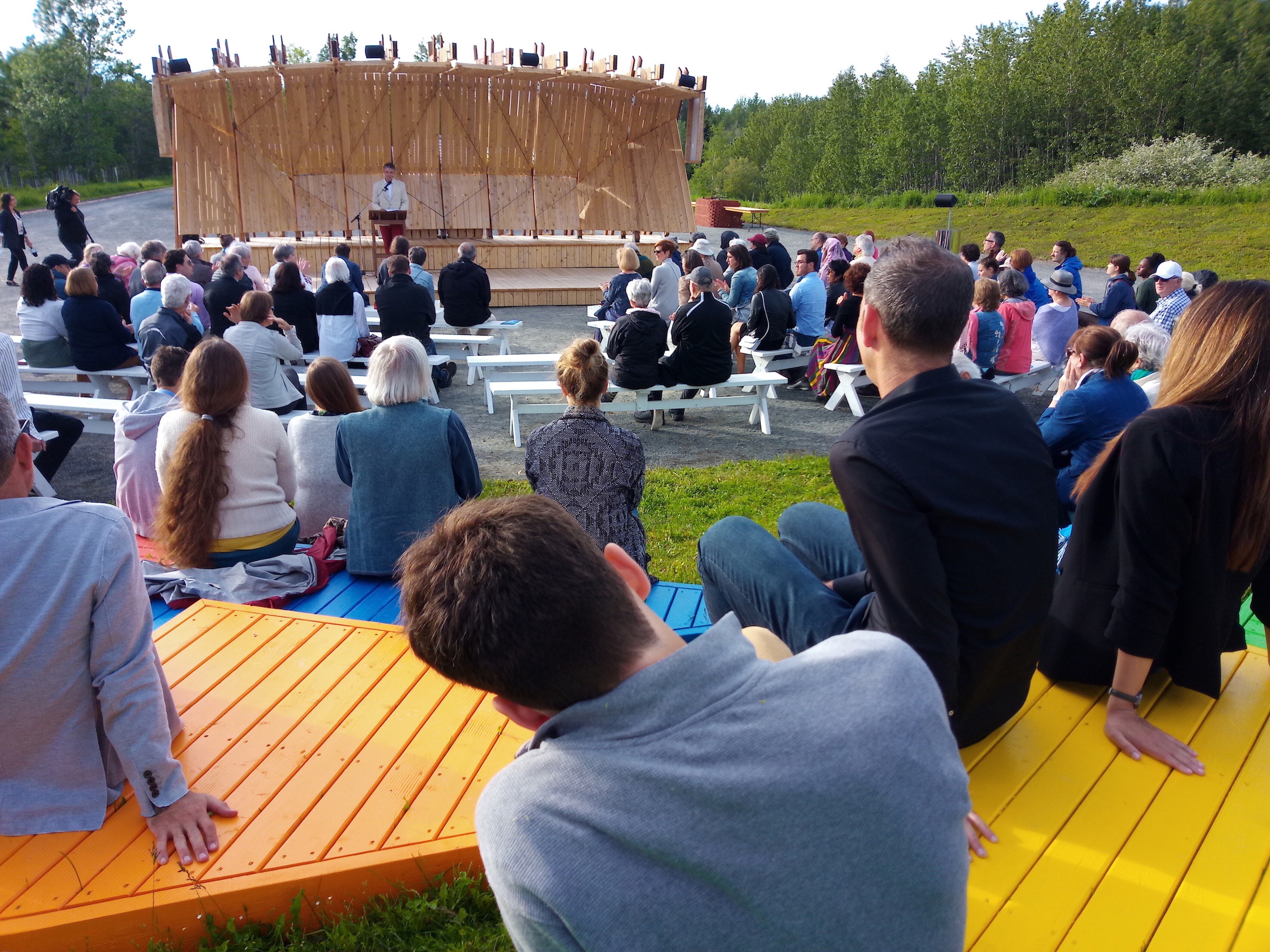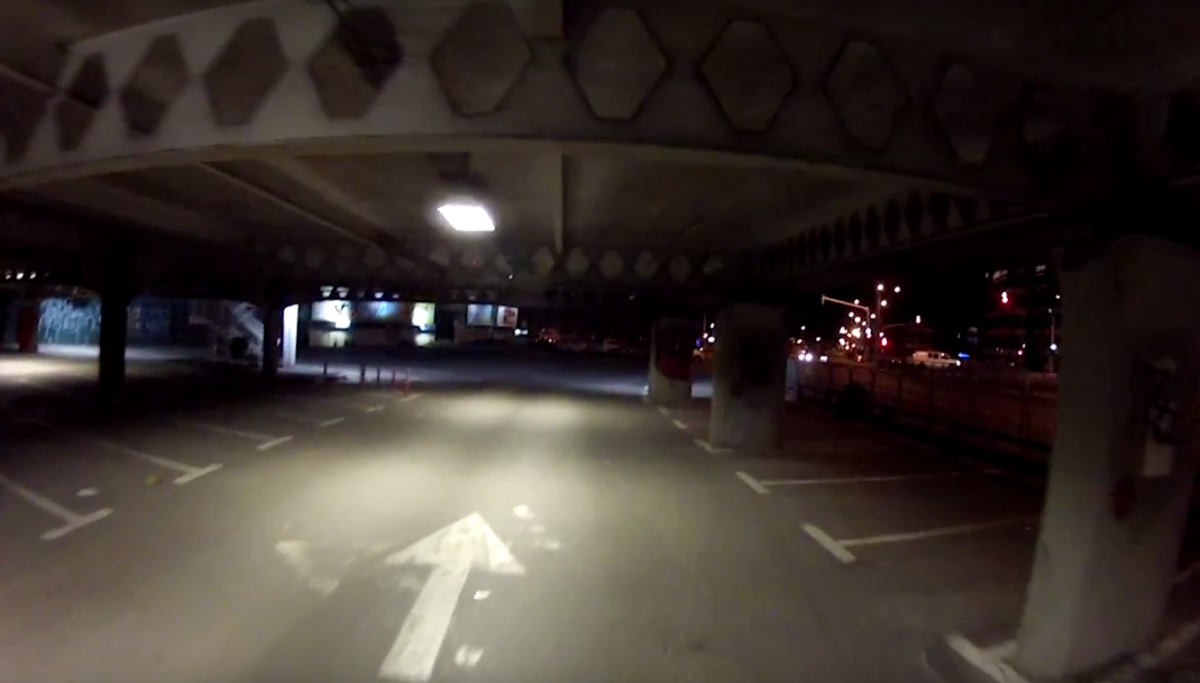During the first half of 2019 I was lucky to have the chance to take part in an interdisciplinary design project with other students from music technology and architecture at McGill University.
An article on this project with an interview of me by Chris Maskell was published on the Schulich School of Music’s website on July 28, 2019; the text of that article is pasted below. (Edit: Another article on the project was released on March 22, 2021 on McGill’s news site by François Shalom.)
Bicentennial Stage and Pavilion officially launched
Students, faculty, and researchers from across McGill University collaborated on this exciting interdisciplinary project.
McGill University is ramping up activities in advance of its 200th anniversary in 2020 — and what better way to celebrate than the creation of a unique stage for the University’s lower campus?
Officially launched on June 21, 2019, the Bicentennial Stage and Pavilion was created as a result of a project that brought together students and faculty from McGill’s Peter Guo-hua Fu School of Architecture, the Schulich School of Music, and the Centre for Interdisciplinary Research in Music Media and Technology (CIRMMT). Built primarily out of wood, the stage can be disassembled and stored as needed, and features a substantial multi-channel sound system that can be used for a variety of events for years to come. Temporarily located at the Jardins du Métis/Reford Gardens near Rimouski, Quebec, the Stage will be relocated to McGill’s Downtown Campus at a later date after a stop at the Macdonald Campus.
We spoke to Yuval Adler, a Ph.D student in Music Technology at Schulich, in a recent email exchange to learn about his involvement in the project and more details about the stage itself.
Q: What general guidelines was the team provided at the start of the Bicentennial Stage and Pavilion project? What’s your role in the project?
A: We were given fairly loose guidelines — to create a stage for student performances on campus that would be part of McGill’s bicentennial celebrations. Other than that there were emergent requirements arising from the different locations the structure would inhabit. We knew it should support “unplugged” performances of student theatre and music, but we were also excited to incorporate some of the musical technological elements that McGill excels at, and so wanted to incorporate a multi channel sound system in the project. I was one of the students in the music technology seminar (a course was offered as a graduate seminar through both music technology and architecture), and so later in the course, as the architectural work shifted to more technical plans and details, we focused more on the audio aspect of the project — designing and budgeting the sound system. During the summer design/build portion (after the seminar concluded) I helped with the physical construction of the stage at first, and once that was advanced enough shifted to integrating the sound system we put together into the structure with CIRMMT’s Florian Grond, who taught the music technology component of this interdisciplinary collaboration.
Q: Can you tell us about what’s unique about the stage?
A: The first apparent thing is the use of multiple loud speakers in and around the structure. In its current iteration, we have 8 speakers overall in an arc around the audience. We hope to expand that for the final downtown campus installment, so we can support a fully 3D sound environment for multimedia performances and installations. But even if this portion of the project wasn’t there, the stage also acts as an acoustic enhancer for performances, and obviously all of these elements can be used together in a multimedia work. McGill students should start dreaming and planning! Other than the musical and acoustical aspects, most if not all building materials were locally sourced from Quebec businesses, from the wood used to the custom made galvanized steel parts the students designed.
Q: What do you hope the stage will offer the McGill community? How did this influence the design?
A: We wanted to support as wide a range of possibilities for both student and community engagement. If this stage will be present on campus for years after most of us finish our studies here, we wanted to both anticipate as much as possible, as well as acknowledge that the structure will and should have a life of its own. I already mentioned the multimedia and acoustic performance aspects, but we also wanted it to possibly function as a stage for external guest shows (for example, perhaps the Montreal International Jazz Festival could stage something there), student art exhibits, and just a nice place to have lunch with colleagues during the day. The planned location of the stage on campus should be visible from Sherbrooke street, and so we hope the interesting angular surfaces will make for a good video projection surface to draw passersby onto the campus to engage with whatever it’s being used for at that moment.
Q: What was one of the most interesting parts of the collaboration between the different McGill faculties and CIRMMT?
A: I was very impressed with the architecture students’ willingness to learn about all the different acoustic and artistic requirements we presented them with. I really enjoyed the early brainstorm and design parts of the process where we were broken up into groups that mixed music and architecture students together. Later in the process Romain Dumoulin, a CIRMMT project manager and acoustician, instructed the architecture students on running acoustic simulations on their plans for the stage. There was a lot of excellent exchanges like that. I really enjoyed joining them in the build section, making the structure I previously saw in computer plans into a physical object, seeing all the small problems that arise in the realization process. Also, having a break from my usual research work at the computer desk and physically building this thing was a much appreciated balance to the semester.
Q: What unique challenges did the project offer? How were they addressed?
A: There were so many small things along the way, it’s hard to choose. It was a very big project with many people taking part in many different aspects, so perhaps the biggest issue was making it work overall. In that sense everyone’s professionalism and drive were a huge asset. So many people involved in the project gave much more than was originally required of them. More technically, long e-mail chains and shared cloud documents were a must. Miraculously it all worked out, and I had a blast working with everyone involved.
Below are some pictures I took following the audio components’ installation, with views of some of the speakers, the backstage audio interface cabinets, and the sign giving credit to the many people involved in this undertaking.






